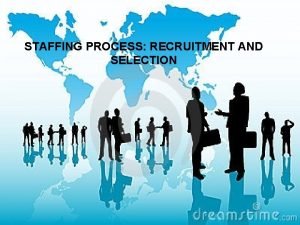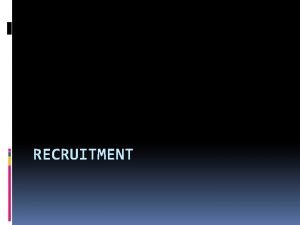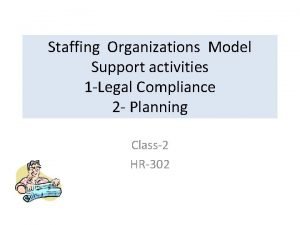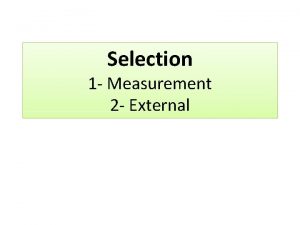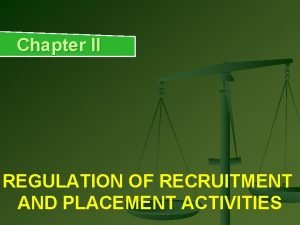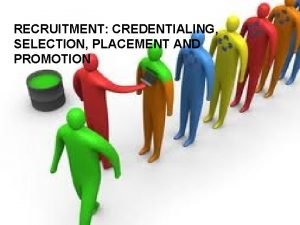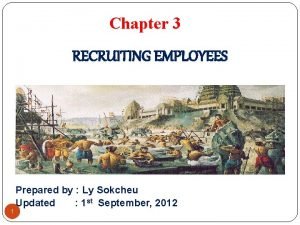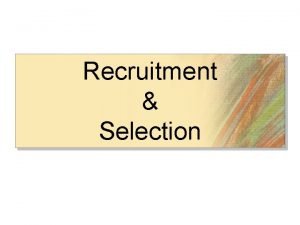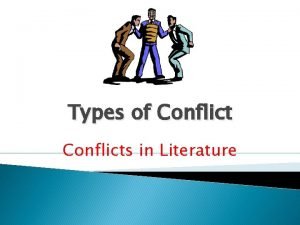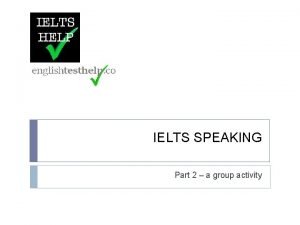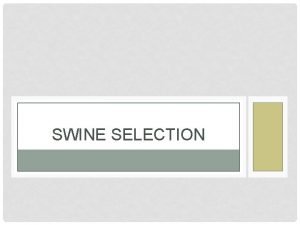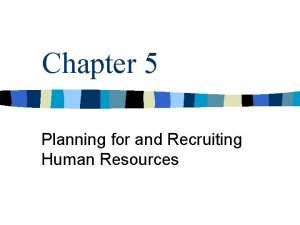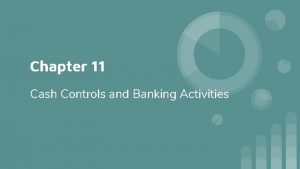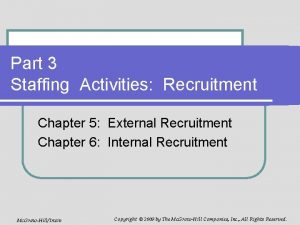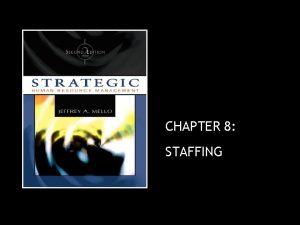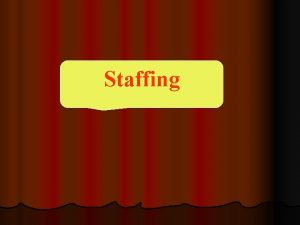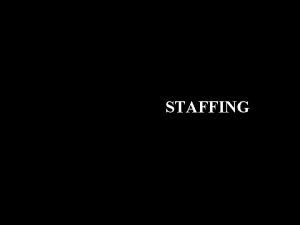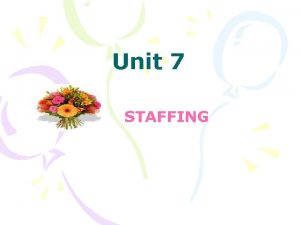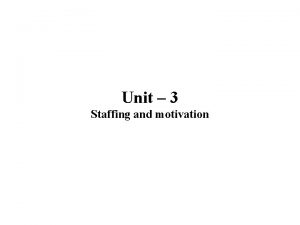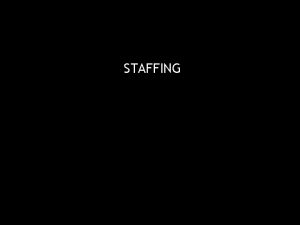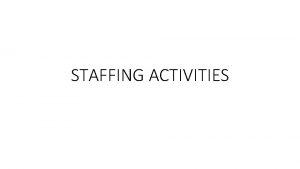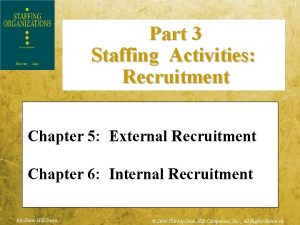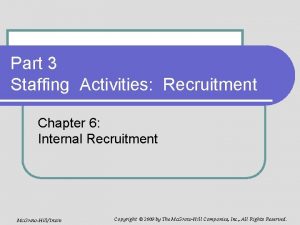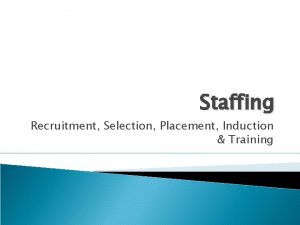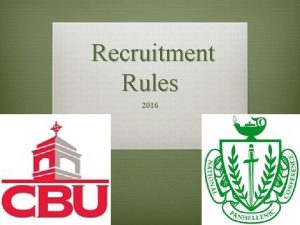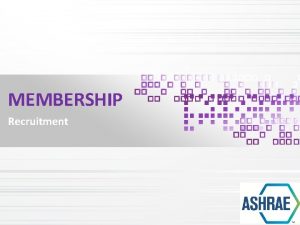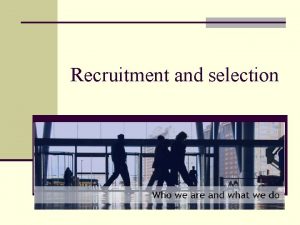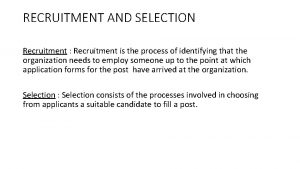Part 3 Staffing Activities Recruitment Chapter 5 External




























- Slides: 28

Part 3 Staffing Activities: Recruitment Chapter 5: External Recruitment Chapter 6: Internal Recruitment Mc. Graw-Hill/Irwin Copyright © 2009 by The Mc. Graw-Hill Companies, Inc. , All Rights Reserved.

Part 3 Staffing Activities: Recruitment Chapter 5: External Recruitment

Staffing Organizations Model Organization Mission Goals and Objectives Organization Strategy HR and Staffing Strategy Staffing Policies and Programs Support Activities Core Staffing Activities Legal compliance Planning Recruitment: Selection: Job analysis Employment: External, internal Measurement, external, internal Decision making, final match Staffing System and Retention Management 5 -3

Chapter Outline Recruitment Planning l Organizational Issues l Administrative Issues l Recruiters l Strategy Development l Open Versus Targeted Recruitment l Recruitment Sources l Recruiting Metrics l Searching l Communication Message l Communication Medium l Applicant Reactions l Reactions to Recruiters l Reactions to the Recruitment Process l Transition to Selection l Legal Issues l Definition of a Job Applicant l Affirmative Action Programs l Electronic Recruitment l Job Advertisements l Fraud and Misrepresentation l 5 -4

Discussion Questions for This Chapter l l l List and briefly describe each of the administrative issues that needs to be addressed in the planning stage of external recruiting. List 10 sources of applicants that organizations turn to when recruiting. For each source, identify needs specific to the source, as well as pros and cons of using the source for recruitment. In designing the communication message to be used in external recruiting, what kinds of information should be included? What are the advantages of conveying a realistic recruitment message as opposed to portraying the job in a way that the organization thinks that job applicants want to hear? What nontraditional inducements are some organizations offering so that they are seen as family-friendly organizations? What result does the organization hope to realize as a result of providing these inducements? 5 -5

Recruitment Planning: Administrative Issues l In-house vs. external recruitment agency l Many companies do recruiting in-house l l l Smaller companies may rely on external recruitment agencies Individual vs. cooperative recruitment alliances l l Recommended approach for large companies Cooperative alliances involve arrangements to share recruitment resources Centralized vs. decentralized recruitment 5 -6

Recruitment Planning: Administrative Issues l Requisitions l l Number of contacts l l Exh. 5. 1: Personnel Requisition Yield ratio - Relationship of applicant inputs to outputs at various decision points Types of contacts l l Qualifications to perform job must be clearly established Consideration must be given to job search and choice process used by applicants 5 -7

Exh. 5. 2: Example Recruitment Budget l Should recruitment expenses be charged to HR or to the business unit using HR services? l l Most organizations charge the HR department, possibly to encourage each business unit to use the recruitment services of the HR group May result in the business unit users not being concerned about minimizing costs. 5 -8

Recruitment Planning: Administrative Issues (continued) l Development l of a recruitment guide Ex. 5. 3: Recruitment Guide for Director of Claims l Process flow and record keeping l Recruiters Selecting recruiters l Training recruiters l 5 -9

Discussion questions l List and briefly describe each of the administrative issues that needs to be addressed in the planning stage of external recruiting. 5 -10

Considerations Related to Recruiters: Selection l Desirable characteristics of recruiters l l l Strong interpersonal skills Knowledge about company, jobs, and career-related issues Technology skills Enthusiasm Various sources of recruiters l l l HR professionals Line managers Employees 5 -11

Considerations Related to Recruiters: Training l Traditional areas of training l l Interviewing skills, job analysis, interpersonal skills, laws, forms and reports, company and job characteristics, and recruitment targets Nontraditional areas of training l Technology skills, marketing skills, working with other departments, and ethics 5 -12

Strategy Development l Open l vs. targeted recruitment Choosing an audience l Recruitment l Choosing ways to get the message out l Recruiting l sources metrics Assessing the effectiveness of recruiting methods 5 -13

Open vs. Targeted Recruitment Open recruitment l Targeted recruitment l l l l l Key KSAO shortages Workforce diversity gaps Passive job seekers or noncandidates Former military personnel Employment discouraged Reward seekers Former employees Reluctant applicants 5 -14

Ex. 5. 4 Making the Choice Between Open and Targeted Recruiting 5 -15

Recruitment Sources l l l l Applicant initiated Employee referrals Employee networks Advertisements Employment websites Colleges and placement offices Employment agencies l l l Executive search firms Professional associations and meetings Social service agencies Outplacement services Job fairs Co-ops and internships 5 -16

Features of High-Impact Organizational Websites l Easily navigated l A “job cart” function l Résumé builders l Detailed information on career opportunities l Clear graphics l Allow applicants to create profiles l Self-assessment inventories 5 -17

Employee Referrals l One of the most common recruiting methods l Finds candidates who are better informed about organizational culture and values l Lower turnover rates l Often boosted by providing cash bonuses to employees who refer successful candidates 5 -18

Employment Websites l Functionality l l Ability to create and approve job requisitions online Manage recruiting tasks Track the progress of open positions and candidates Report on recruiting metrics like time to hire, cost per hire, or equal employment opportunity (EEO) l General websites l l l Attract a wider variety of potential applicants Reach includes millions of users Niche websites l l Target individuals with specific skill sets Qualified and motivated user base 5 -19

Metrics for Evaluating Recruiting Methods Quantity l Quality l Cost l Impact on HR Outcomes l l l Employee satisfaction Job performance Diversity Retention Ex. 5. 5 Potential Recruiting Metrics for Different Sources 5 -20

Discussion question l List 10 sources of applicants that organizations turn to when recruiting. For each source, identify needs specific to the source, as well as pros and cons of using the source for recruitment. 5 -21

Ex. 5. 7 Comparing Choice of Messages 5 -22

Discussion questions In designing the communication message to be used in external recruiting, what kinds of information should be included? l What are the advantages of conveying a realistic recruitment message as opposed to portraying the job in a way that the organization thinks that job applicants want to hear? l What nontraditional inducements are some organizations offering so that they are seen as familyfriendly organizations? What result does the organization hope to realize as a result of providing these inducements? l 5 -23

Searching: Communication Medium l Recruitment brochures l Videos and videoconferencing l Advertisements Classified advertisements l Online advertisements (banner ads) l Radio and television advertisements l l Organizational websites l Direct contact (telephone or e-mail) 5 -24

Applicant Reactions l Reactions to recruiters l l Influence of recruiter vs. job characteristics Influence of recruiter on attitudes and behaviors Demographics of recruiters Influential recruiter behaviors l l Warmth and knowledge of the job Reactions to recruitment process l l Relationship of screening devices to job Delay times in recruitment process Funding of recruitment process Credibility of recruiter during recruitment process 5 -25

Transition to Selection l Involves making applicants aware of Next steps in hiring process l Selection methods used and instructions l Expectations and requirements l 5 -26

Legal Issues l Definition of job applicant l l l Affirmative Action Programs l l Guidelines of OFCCP for recruitment actions Electronic recruitment l l l Definition according to EEOC and OFCCP Importance of establishing written application policies Usage may create artificial barriers to employment opportunities Job advertisements Fraud and misrepresentation 5 -27

Ethical Issues l Issue 1 l l Many organizations adopt a targeted recruitment strategy. For example, Home Depot has targeted workers 50 and above in its recruitment efforts, which include advertising specifically in media outlets frequented by older individuals. Other organizations target recruitment messages at women, minorities, or those with desired skills. Do you think targeted recruitment systems are fair? Why or why not? Issue 2 l Most organizations have in place job boards on their web page where applicants can apply for jobs online. What ethical obligations, if any, do you think organizations have to individuals who apply for jobs online? 5 -28
 Staffing difinitions and steps
Staffing difinitions and steps What is recruitment means
What is recruitment means Staffing organizations model
Staffing organizations model External staffing
External staffing External staffing
External staffing Regulation of recruitment and placement activities
Regulation of recruitment and placement activities Internal sources of recruitment
Internal sources of recruitment Preliminary interview
Preliminary interview Advantage of external recruitment
Advantage of external recruitment Resource management
Resource management Advantages of external recruitment
Advantages of external recruitment Operating activities vs investing activities
Operating activities vs investing activities Indoor sports and outdoor sports
Indoor sports and outdoor sports Support activities and primary activities
Support activities and primary activities Primary activities and secondary activities
Primary activities and secondary activities External conflict in literature
External conflict in literature External-external trips
External-external trips Speaking ielts topics
Speaking ielts topics Prywer
Prywer Parts of a swine
Parts of a swine Chapter 5 human resource planning and recruitment
Chapter 5 human resource planning and recruitment Part whole model subtraction
Part whole model subtraction Part to part ratio definition
Part to part ratio definition Brainpop ratios
Brainpop ratios What is technical description
What is technical description Bar
Bar The phase of the moon you see depends on ______.
The phase of the moon you see depends on ______. Minitab adalah
Minitab adalah Chapter 11 cash control and banking activities
Chapter 11 cash control and banking activities
